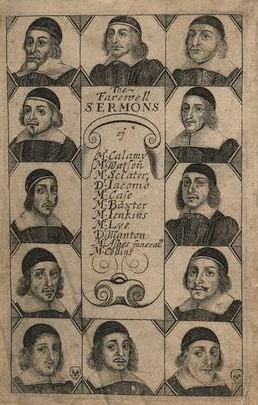Great Ejection facts for kids
The Great Ejection happened in England in 1662. It was a time when thousands of Puritan ministers were forced to leave their jobs in the Church of England. This happened after King Charles II returned to the throne, a period known as the Restoration. It was a big event that shaped religious life in England for a long time.
Contents
Why Ministers Were Ejected
The main reason for the Great Ejection was a new law called the Act of Uniformity 1662. This law said that every minister had to agree to use the new 1662 Book of Common Prayer. If they refused by a specific date, August 24, 1662, they would be removed from the Church of England.
Black Bartholomew's Day
This date, August 24, became known as "Black Bartholomew's Day" among those who disagreed with the Church of England. It was a sad day for them, and the name reminded people of another terrible event, the St Bartholomew's Day massacre in France in 1572.
Who Was Affected
Many ministers, around 2,500, chose to leave their positions rather than follow the new rules. These included famous religious leaders like Richard Baxter and John Flavel. Their stories were later collected by a historian named Edmund Calamy.
Impact of the Great Ejection
Before 1662, some ministers already practiced their faith outside the official church. But the Great Ejection made the idea of "non-conformity" much stronger. Nonconformists were Protestants who did not follow the rules of the Church of England.
Strict New Rules
The government also introduced very strict religious rules, sometimes called the Clarendon Code or Penal Laws. These laws meant that Nonconformists were often excluded from important parts of public life. For example, they couldn't hold certain government jobs or get degrees from universities for many years. This separation lasted for a very long time in English culture.
Remembering the Ejection
In 1862, 200 years after the Ejection, people debated its meaning. Some Nonconformists built places like the Memorial Hall in Manchester to remember the event. Some historians, like Iain Murray, believed the Ejection was not just about small differences in church rules. They thought it was about deeper ideas of what true Christianity meant.
A Lasting Injury
J. C. Ryle, who was a Bishop in Liverpool, once said that the Great Ejection caused "an injury to the cause of true religion in England which will probably never be repaired." He meant that it had a very negative and lasting effect on religious life in the country.
A Service of Reconciliation
However, in 2012, 350 years after the Ejection, a special service was held at Westminster Abbey. It was a "Service of Reconciliation." The Archbishop of Canterbury, Rowan Williams, spoke at the service. People from both the Church of England and the United Reformed Church (which includes many Nonconformists) attended. This showed a desire to heal old divisions.
See also
- History of the Puritans from 1649
- Dissenting academies
- English Presbyterianism
- Category:Ejected English ministers of 1662
Images for kids
-
The Memorial Hall in Manchester, built to remember the 200th anniversary of the Great Ejection.



